Pandemic Relief Fund for Restaurants Is Open – The Money Won’t Last
Article Note:
- The SBA began accepting Restaurant Revitalization applications on May 3.
- The Restaurant Revitalization Fund (RRF) is a first-come-first-serve program.
- The Paycheck Protection Program ends on May 31, 2021.
Finally, April 15, I mean May 17, is almost behind us. We should get a breather for at least a few weeks. We should, but “no.” Our business clients have something else in mind as they wait impatiently for us to get back to their business. Two items loom: The Restaurant Revitalization Fund grant program and the (second draw) Paycheck Protection Program.
The Paycheck Protection Program ends on May 31, 2021. All eligible entities can apply through a participating lender until then. We’ve done this before when we helped clients with the first draw PPP loans. We can do it again. If you need a refresher, second draw loan details are available on the SBA website. If the client hasn’t yet applied, there’s not a lot of time to work with the client (probably a small business client who doesn’t know they qualify for an additional PPP loan) to get their application into the lender.
The Restaurant Revitalization Fund grants are new. The SBA began accepting applications on May 3. This is a first-come-first-serve program. If you have restaurant, bar, or other qualifying business clients, the earlier the application is submitted, the more likely the business will get government money to help them recover from COVID close-downs, capacity limits, and customer caution.
Restaurant Revitalization Fund Program Details
The American Rescue Plan Act (ARPA) established the Restaurant Revitalization Fund (RRF) to provide funding to help restaurants and other eligible businesses keep their doors open. This program provides restaurants with funding equal to their pandemic-related revenue loss up to $10 million per business and no more than $5 million per physical location.
ARPA funded the restaurant revitalization program with $28.6 billion. Of that amount, set-asides have been established for small businesses.
- $5 billion is set aside for applicants with 2019 gross receipts of not more than $500,000.
- An additional $4 billion is set-aside for applicants with 2019 gross receipts from $500,001 to $1,500,000.
- An additional $500 million is set-aside for applicants with 2019 gross receipts of not more than $50,000.
Eligibility
Eligible entities who have experienced pandemic-related revenue loss include:
- Restaurants,
- Food stands, food trucks, food carts,
- Caterers,
- Bars, saloons, lounges, taverns,
- Snack and nonalcoholic beverage bars,
- Bakeries (onsite sales to the public comprise at least 33% of gross receipts),
- Brewpubs, tasting rooms, taprooms (onsite sales to the public comprise at least 33% of gross receipts)
- Breweries and/or microbreweries (onsite sales to the public comprise at least 33% of gross receipts),
- Wineries and distilleries (onsite sales to the public comprise at least 33% of gross receipts),
- Inns (onsite sales of food and beverage to the public comprise at least 33% of gross receipts),
- Licensed facilities or premises of a beverage alcohol producer where the public may taste, sample, or purchase products.
Calculation of revenue loss
For applicants in business before January 1, 2019: 2019 gross receipts minus 2020 gross receipts minus PPP loan amounts. For applicants that began operations partially through 2019: (average 2019 monthly gross receipts x 12) minus 2020 gross receipts minus PPP loan amounts. For applicants that began operations on or between January 1, 2020, and March 10, 2021, and applicants not yet opened but have incurred eligible expenses: amount spent on eligible expenses between February 15, 2020, and March 11, 2021 minus 2020 gross receipts minus 2021 gross receipts (through March 11, 2021) minus PPP loan amounts.
Required documentation
Documentation is required for the revenue loss calculation. Preferred documentation is:
- 3 most recent months of bank statements for the account into which RRF funds will be deposited.
- 2019 Gross Receipts – Federal Tax Returns filed (Forms 1120, 1120S and 1065, or Schedules C and F;
- 2020 Gross Receipts (Federal Tax Returns filed, Point of Sale reports, or externally or internally prepared financial statements such as Income Statements or Profit and Loss Statements, signed, dated & certified as to accuracy by Applicant (may delay review past 14 days).
- Additional documentation is required for Applicants: a brewpub, tasting room, taproom, brewery, winery, distillery, bakery, or Inn to evidence that onsite sales to the public comprise at least 33% of gross receipts for 2019.
- In addition, businesses will be required to submit IRS Form 4506-T, Request for Transcript of Tax Return, completed and signed by the applicant.
Application
Applications are made through SBA-recognized Point of Sale (POS) vendors or directly via SBA in an online application portal: https://restaurants.sba.gov. An SBA 3172 sample application is available for download on the SBA website.
The SBA began accepting RRF applications on May 3, 2021. The first 21 days are reserved for processing applications for businesses owned at least 51% by women, veterans, and socially and economically disadvantaged individuals. Socially disadvantaged individuals are defined as those who have been subjected to racial or ethnic prejudice or cultural bias.
Warning
After the first 21 days, the SBA will fund eligible businesses on a first-come basis UNTIL FUNDING IS EXHAUSTED.
Repaying the grant
Recipients are not required to repay the funding if funds are used for eligible expenses no later than March 11, 2023. Funds may be used for payroll, mortgage payments, rent payments, utilities, maintenance expenses, construction of outdoor seating, supplies, food, and beverage materials (including raw materials, supplier costs, and operating expenses. Like PPPs, grants are tax-free to the recipient and do not reduce tax deductions for expenses paid with grant proceeds.
Businesses that receive RRF funds will be required to report to SBA no later than December 31, 2021, how they have used their funds for eligible expenses. If, by December 31, 2021, the entity has not expended all its funds, the annual reporting requirement continues until funds have been fully expended.

